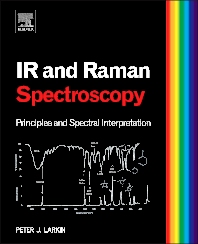Books in Infrared and raman spectroscopy
Books in Infrared and raman spectroscopy

Applied Raman Spectroscopy
- 1st Edition
- Vivek Kumar Singh
- English

Wave Optics in Infrared Spectroscopy
- 1st Edition
- Thomas G. Mayerhöfer
- English

Advances in Near-Infrared Measurements
- 1st Edition
- Gabor Patonay
- English

TRAC: Trends in Analytical Chemistry
- 1st Edition
- U A Th Brinkman + 2 more
- English

Introductory Raman Spectroscopy
- 1st Edition
- John R. Ferraro + 1 more
- English

Handbook of Infrared Standards
- 1st Edition
- Guy Guelachvili + 1 more
- English

Infrared and Raman Spectroscopy
- 1st Edition
- Peter Larkin
- English

Principles of Surface-Enhanced Raman Spectroscopy
- 1st Edition
- Eric Le Ru + 1 more
- English

Tip Enhancement
- 1st Edition
- English

Handbook of Infrared Detection Technologies
- 1st Edition
- M. Henini + 1 more
- English